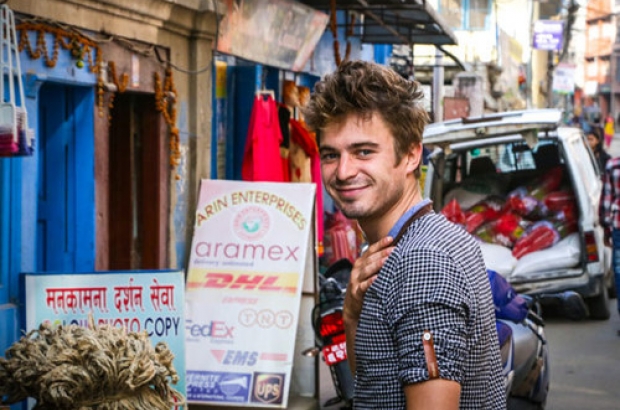- Daily & Weekly newsletters
- Buy & download The Bulletin
- Comment on our articles
Dinner gone wild
If you were to bike from Brussels to Mumbai, you’d see climates change and flat fields turn to mountains then back to flat. Customs and religions would reshape themselves and languages would bleed one into the next. But you’d always have your plants, says Ben Brumagne, an herbalist specialised in wild plants.
All throughout the northern hemisphere, whether you’re in North America, Europe, Iran or Nepal, you will find similar species of plants. Some are the exactly the same, many or cousins of one another. So, when Brumagne hopped on his bike and cycled to India a few years ago, he says, “I always felt at home, because I had the plants around me. I knew the plants. They gave me a feeling of comfort.”
Back in Brussels, Brumagne started Forest to Plate, a (for the moment) one-man organisation aimed at showing people the impressive edible bounty growing around them. “We want to show all the possibilities besides the food we eat from supermarkets and even from farmers, because the amount of food available is crazy. Once you see it, it’s phenomenal.”
In Brussels, together with his father, Brumagne organises four-course dinners made from some 30 wild plants that he has foraged. They lay out an impressive buffet of soups, salads and main courses with Brumagne explaining where all the ingredients came from, what nutrients they provide and how he cooked them. “It’s more than just eating, it’s an experience,” he says.
So far, these dinners have attracted a motley crew of diners. They’re not only made of up the usual suspects – local herbalists, gardeners and other eco-minded folk – but also lawyers, doctors and bosses of banks.
“Our dinners have been an opening up for people, people who would never even go on a walk. Also lots of international people come. From the first or second dinner, we had people from Finland, Ecuador, Czech Republic. They’re on holiday and they see ‘wild edible plants dinner’ advertised on Forest to Plate’s Facebook page and they come. It’s amazing.”
Besides the courses, Brumagne also teaches workshops and leads half-day walks through forests, showing people what to forage and how to do it responsibly. In the evenings, they cook with the wild plants they’ve gathered. Finally, he gives herbalist trainings, both for other herbalists or people with prior plant knowledge and for total beginners.
In the end, Brumagne’s vision is broader than just teaching people to recognise plant species. He would like to see a real community of foragers develop in Belgium, connected to foragers around the world, who write and operate under an agreed set of rules to make foraging safe and healthy for the environment.
Why go wild?
“Around 10,000 years ago we started doing agriculture and we started selecting out crops,” Brumagne explains. “We always wanted more sweet, less fibrous, less bitter, etc.” What has happened over the last 10,000 years, and certainly within the last 150 years, according to Brumagne, is that as we’ve modified our crops many of their nutrients have been lost.
“In wild plants you’ll still find these nutrients,” he says, which are powerful ways to stimulate the heart, the liver, the brain and the whole body in a variety of ways. “But that’s the end goal,” he laughs, “I usually never mention that.”
Beyond nutrition, for Brumagne, learning about plants has meant learning to see the world in a different way. “Four years ago, I didn’t know anything about these plants. I thought I was properly educated and that I kind of understood what was happening around me. Then I started learning plants and the whole world just doubled. “
The results surprised him. “I could see buildings before and I could understand texts and stuff, but now there’s so much green that has a meaning. Once you know that it’s edible and medicinal, the plant has a lot more worth. It’s more than green; it gives you a deeper connection.”
Perils of eating wildly
Asked if there are any risks to foraging for plants, Brumagne gets more serious for a moment. “Rule number one,” he says, “If you don’t know it, don’t eat it. Ever.”
Belgium has very few deadly plants, he says, maybe three or four. That’s not much compared to places like the tropics where up to a third of the plants could seriously harm you. However, we have plenty of poisonous plants that could make you sick, so you should know what you’re doing. He compares going into a forest and picking and eating at random akin to driving without a drivers’ license. “It can be dangerous.”
But with knowledge and a bit of experience, you’re perfectly safe, he says. “I’ve been doing this for four years and I’ve never had any problems, and I eat around 200 wild plants.”
Photo by Zach Ashton



















